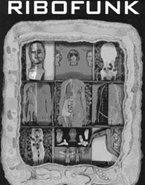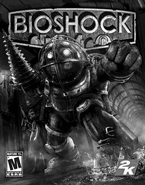 THE GATEHOUSE
THE GATEHOUSE
“What�s Biopunk?”
By N. Ottens (19 May 2008)
It seems uncertain who first coined the phrase “biopunk,” but presumably the term was invented after steampunk had been established as a genre; at least, it was not until steampunk had entered mainstream that biopunk emerged. Like steampunk, this proposed literary genre finds its origins in cyberpunk fiction. It replaces the information technology of cybernetics with the synthetic biology of genetic engineering, but maintains most of the other elements which define the genre. Which begs the question: should biopunk be regarded a genre separate from cyberpunk? And if not, are steam- and dieselpunk truly genres in their own right?
The Face of Cyberpunk
According to Lawrence Person, leading cyberpunk theorist, the genre depicts a dystopic feature ”where daily life [is] impacted by rapid technological change, an ubiquitous datasphere of computerized information, and invasive modification of the human body.”1 Cyberpunk fiction typically features marginalized, aliented loners who live on the edge of that society, hence the reference to punk subculture, echoing the atmosphere of film noir and inspired by hard-boiled detective novels. The genre�s vision of a troubled future represents the antithesis of utopian science fiction, evident from its post-industrial dystopian setting characterized by extraordinary cultural ferment and the application of technology in ways never anticipated by its creators.
Cyberpunk literature is (or was, considering the less dystopian perceptions of postcyberpunk) significant, because it represented contemporary concerns about the shortcomings of urban society, warning against government and corporate corruption, the dangers of pervasive surveillance technology, and alienation and indifference. Where cyberpunk evokes aversion against technological progress, postcyberpunk tends to portray its advantages instead. Biopunk, however, changes little to the basic premise of cyberpunk, maintaining its dystopian overtones while replacing cybernetics with biotechnology.
Biopunk: A Worthy Successor?
Rather than depicting the marginalized drifters in a society grown indifferent by a rapid evolution of information technology, biopunk stories portray the underground side of a biotechnological revolution. Its rebels may be the products of human experimentation, their struggles set against the backdrop of totalitarian governments or megacorporations which abuse biotechnolgoy as a means of social control or profiteering.
An author typically hailed as having defined the biopunk genre is Paul Di Filippo, whose collection of short stories published as Ribofunk (“ribo” referring to the full name of RNA; ribonucleic acid) is more reminiscent of detective pulp than cyberpunk. Movies like the 1997 science fiction drama Gattaca, which depicts selective breeding through preimplantation genetic diagnosis, as well as the 2006 film adaption of V for Vendetta, which features a protagonist with superhuman traits fighting an oppressive fascist regime, are considered biopunk, in spite of their departure from other classic cyberpunk (and, in the case of V for Vendetta, Alan Moore�s original, political) themes. Perhaps the most succesful biopunk installment to date is the 2007 video game BioShock, set amidst the chaos of what was supposed to be an underwater utopia, now infested with the products of biotechnological abuse. BioShock, however, takes place in 1960, and while obviously warning against the dangers of genetic engineering, its setting and technology are more diesel- than biopunk. Indeed, it seems that most, if not all, works of biopunk fiction struggle with the genre to which they ought to adhere: either they can be considered cyberpunk, differing only in terms of technology, or they could be labeled dieselpunk instead, focusing on the ill effects of genetic engineering in the vein of such Nazi human experiments as depicted in games like Return to Castle Wolfenstein (2001) and �berSoldier (2006).
The Larger Cousins
The bulk of biopunk fiction differs from cyberpunk only in that it replaces the cybernetics of the latter with biotechnology. It might best be considered a continuation of traditional cyberpunk, produced by the advent of postcyberpunk, rather than a new genre altogether. Those few biopunk installments not particularly influenced by cyberpunk, including Paul Di Filippo�s short stories collected in Ribofunk as well as the BioShock video game, incorporate neo-noir elements and share themes with Adventure Pulp instead; they may better be labeled dieselpunk thus, with which they have a dystopian outlook in common also.
If we should not regard biopunk a separate genre because it differs from cyberpunk only in terms of technology, we must consider whether steam- and dieselpunk are separate genres still. Unlike biopunk, however, these two genres have less in common with cyberpunk and greater individual characteristics of their own. Steampunk in particular shares little with cyberpunk at all, changing the setting from the future to the past, the technology from modern to old, and the protagonists from outcasts to elite. Steampunk is generally more optimistic, romanticizing the past and averse not to modern technology itself, but to the lack of appreciation for it. Dieselpunk may thematically be more similar to cyberpunk and differs not in its perception of contemporary society but its lack thereof rather. Dieselpunk is strictly a literary genre, more dystopian than steampunk and influenced by mid-century pulp rather than nineteenth-century scientific romance, but it implies no critique of modern-day sensibilities and developments.
Conclusion
Biopunk changes little to the basic premise of cyberpunk, depicting rapid technological change and invasive modification of the human body, albeit not by cybernetics but biotechnology. Presumably influenced by the less dystopian outlook of postcyberpunk fiction, biopunk represents contemporary concerns about the shortcomings of modern society, warning against government and corporate corruption and the lack of control and skepticism over and toward the increasing pervasiveness of genetic engineering and the reemergence of eugenics.
The majority of fiction labeled “biopunk” may well be considered to represent a continuation, or update rather, of traditional cyberpunk. Those works of biopunk fiction inspired by mid-century pulp, incorporating hard-boiled detective and neo-noir elements, differ little from dieselpunk instead, sharing adventure themes and dystopian outlook.
1. L. Person, ”Notes Toward a Postcyberpunk Manifesto,” Nova Express, issue 16 (1998); Slashdot (1999)
Please select one of the titles listed below to proceed to your article of choice.
• “The darker, dirtier side,” by N. Ottens (2008)
In which we seek to define the genre of dieselpunk by studying its major influences and proposing several characteristics typical of dieselpunk fiction.• “Quintessential Dieselpunk,” by N. Ottens (2008)
In which we further scrutinize the features of the genre by examining a number of its quintessential works of fiction.• “Two Flavors of Dieselpunk,” by N. Ottens (2008)
In which we introduce the two proposed categories of dieselpunk: the optimistic “Ottensian” and the dark, sometimes post-apocalyptic “Piecraftian”.• “What�s Biopunk?,” by N. Ottens (2008)
In which we discuss the history and characteristics of the proposed sub-genre of biopunk to ascertain whether it is a separate genre.


Ribofunk, merging biopunk and pulp. Paul Di Filippo (1996)

Selective breeding in Gattaca. Columbia Pictures (1997)

BioShock; biopunk dystopia, underwater. 2K Games (2007)